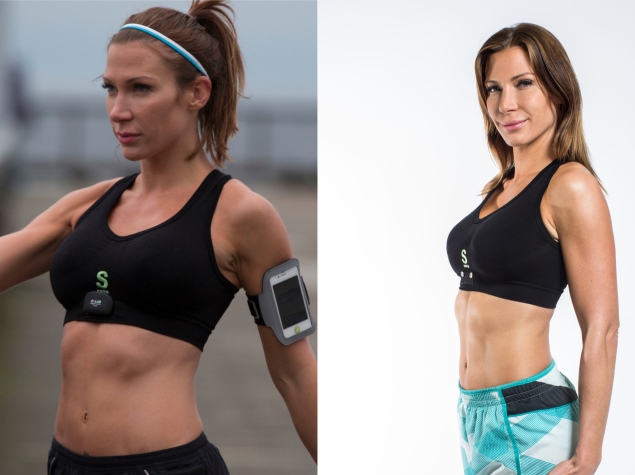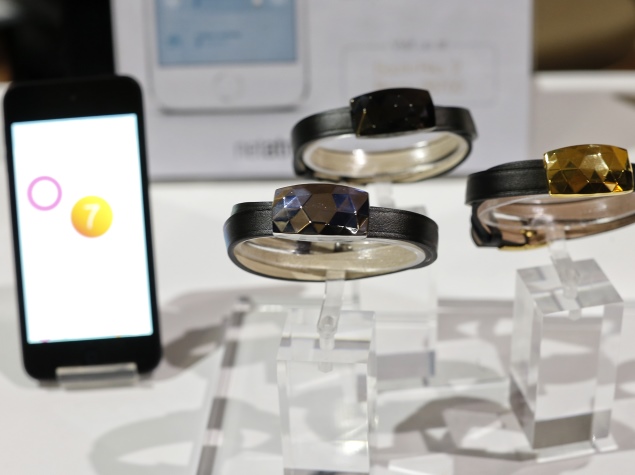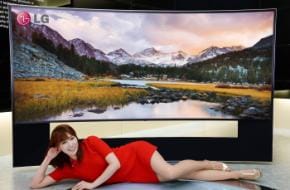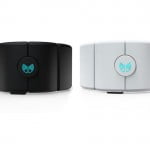
It was also one of the hottest sectors on display at this week’s Consumer Electronics Show (CES) in Las Vegas, the largest annual showcase of tech-related gear.
“Our vision is that the garment is the next computer,” says Davide Vigano, chief executive of Heapsylon, maker of the Sensoria Fitness bra, T-shirt and socks, which connect to a smartphone designed for runners and others who want to monitor their health and improve workouts. The company, which is participating in CES panels and displaying the products on the sidelines of the giant expo, says its key features are “100 percent textile sensors” woven into fabric to be more comfortable, and combine use of a transmitter on the socks with the chest monitor to more accurately track activity.
The company, which is participating in CES panels and displaying the products on the sidelines of the giant expo, says its key features are “100 percent textile sensors” woven into fabric to be more comfortable, and combine use of a transmitter on the socks with the chest monitor to more accurately track activity.
“We get a more accurate picture when the socks and bra work together,” Vigano said.And like several new wearables coming on the market, Sensoria includes a “virtual coach” to help boost motivation and improve technique.
The fitness sector is one of the key areas in wearables, led by devices such as the FitBit and Nike Fuel Band.
Smartwatches are another big segment, with offerings from the crowd-funded Pebble, giants such as Samsung and Qualcomm, and others showing their wares in a new “wrist revolution” zone on the showroom floor, in addition to the large health and fitness section.
And several connected eyewear products are being shown, even if Google Glass is absent.
A $19-billion market
Juniper Research projects that the smart wearable-device market will reach $19 billion by 2018 compared with $1.4 billion in 2013, including segments such as fitness, health and security.
Intel chief executive Brian Krzanich told the CES the chipmaker is making a major push into wearable tech, and showed off some of its products to be released this year including a watch, earbuds which can monitor the wearer’s heart rate and a “onesie” for young infants that can allow parents to monitor a baby’s breathing, sleeping, temperature and positioning.
“We want to make everything smart. That’s what Intel does,” he said.
App makers are leveraging smartphone technology for medical purposes, such as monitoring blood pressure, heart rates and glucose levels.
“The whole idea of allowing you to take control of your own health care is one of the great benefits of this technology,” Samsung vice president David Lowe told a CES panel on Wednesday.
San Francisco-based Qardio produces wearable heart and blood pressure monitors which allow people to keep an eye on their health on a smartphone or even deliver the data to a doctor.
Qardio’s Rosario Iannella said the devices mean he can keep tabs on his elderly mother in Italy.
It also “allows doctors to give better care without spending more time with patients,” he told AFP.
The ‘geek factor’
But makers of wearable tech need to overcome the “geek factor,” or clumsy-looking devices which are unappealing, especially for women.
“The first products on the market are big and bulky and lend themselves to a male techno audience because it’s engineering-driven,” said Rob Enderle, a consultant and analyst with Enderle Group.
“For women it will have to get smaller and more focused on fashion.”
Analyst Jeff Orr at ABI Research said that the first wave of gadgets may not be appealing but “the second and third waves will be more important.” And he said any new devices must blend fashion with practicality.
Some of the more fashionable items are showing up at the vast Las Vegas trade show. One item is the June bracelet from French startup Netatmo, which monitors sun exposure to help users avoid damaging ultraviolet rays, delivering data to a smartphone.
One item is the June bracelet from French startup Netatmo, which monitors sun exposure to help users avoid damaging ultraviolet rays, delivering data to a smartphone.
“This allows you to track exposure to the sun in real time, but it looks like a stylish gemstone bracelet,” said Netatmo’s Emanuelle Thomas.
“It also acts as a personal coach, with recommendations based on your habits. For example, if you are going outside for lunch each day, it might tell you you are spending too much time in the sun.”
British-based CSR is introducing Bluetooth wireless-enabled smart jewelry which can create customized colors and brightness to suit a user’s mood and also get alerts from a smartphone.
And Hong Kong-based watchmaker Ezio is concentrating on style, while gradually adding apps and connectivity to its devices.
“Most of the smartwatches out there are very techy looking,” said Ezio’s Terry Linebarger. “We are focusing on the fashion watch, but with smart features.”Stay in touch with the latest from CES 2014, via our CES page.
CES 2014 – World’s biggest tech event in pics











